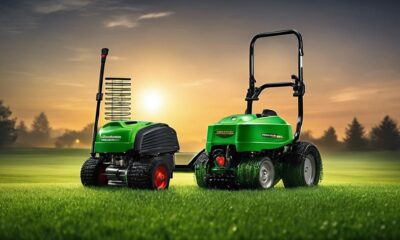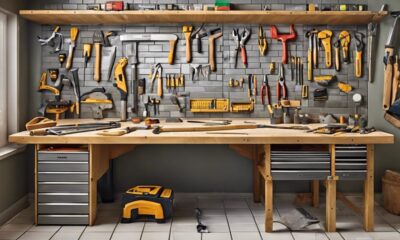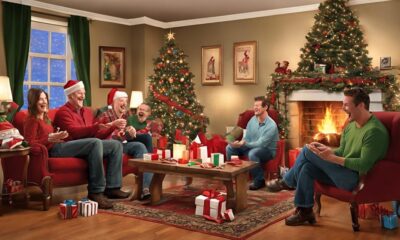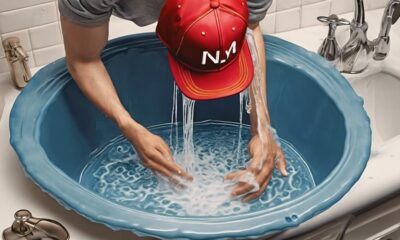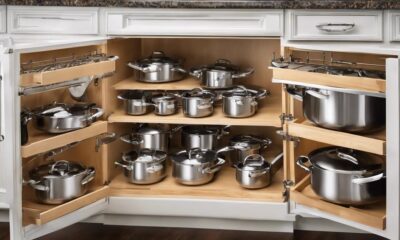Beginners Guides
Ceiling Fan Number of Blades
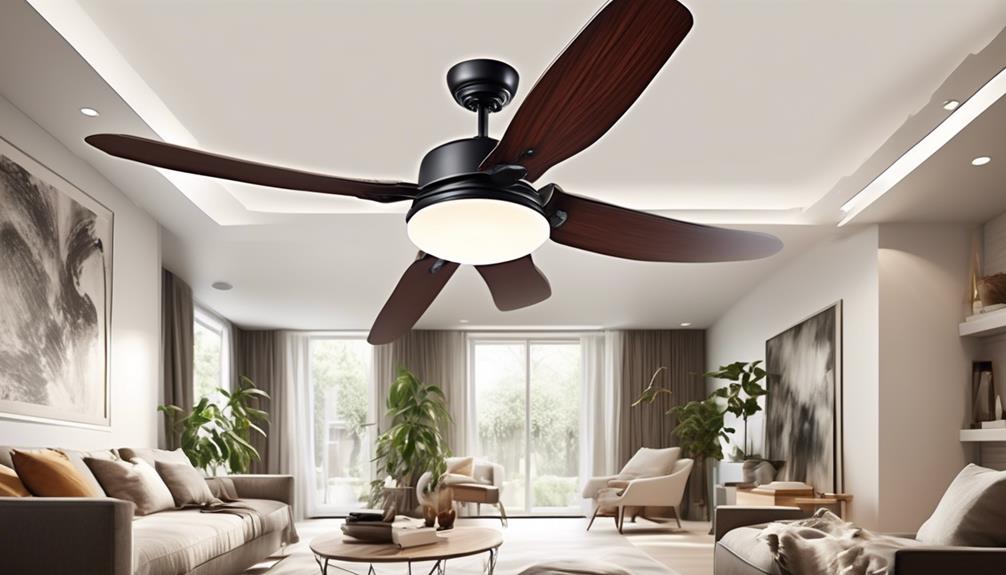
When discussing ceiling fans, the quantity of blades can be viewed as a representation of both functionality and design.
However, the impact of this seemingly simple design element goes beyond mere aesthetics.
Have you ever wondered how the number of blades on a ceiling fan affects its airflow efficiency? Or how it influences energy consumption and noise levels?
Join us as we explore the various factors to consider when choosing the right blade count for your ceiling fan, and uncover the surprising impact it can have on your comfort and energy bills.
Key Takeaways
- The number of blades on a ceiling fan affects its airflow performance.
- Blade quantity plays a significant role in the aesthetic appeal of a ceiling fan.
- Blade count directly impacts the energy efficiency of a ceiling fan.
- Blade quantity affects the noise level produced by a ceiling fan.
Impact of Blade Number on Airflow
How does the number of blades on a ceiling fan affect its airflow performance? This is a critical question when considering the design and functionality of ceiling fans. The airflow performance of a ceiling fan is influenced by the number of blades it has. While it may seem intuitive that more blades would equate to better airflow, this isn't always the case. The relationship between the number of blades and airflow performance is complex and depends on various factors such as blade material properties and design.
Blade material properties play a significant role in determining how the number of blades impacts airflow performance. The material composition affects the weight and aerodynamic properties of the blades, which in turn affect the fan's ability to circulate air efficiently. Additionally, the angle and curvature of the blades, along with the spacing between them, also contribute to airflow performance.
Understanding the interplay between blade number and material properties is essential for optimizing a ceiling fan's airflow performance. By carefully considering these factors, manufacturers can design fans that achieve the desired airflow performance while minimizing energy consumption.
Aesthetic Considerations for Blade Quantity
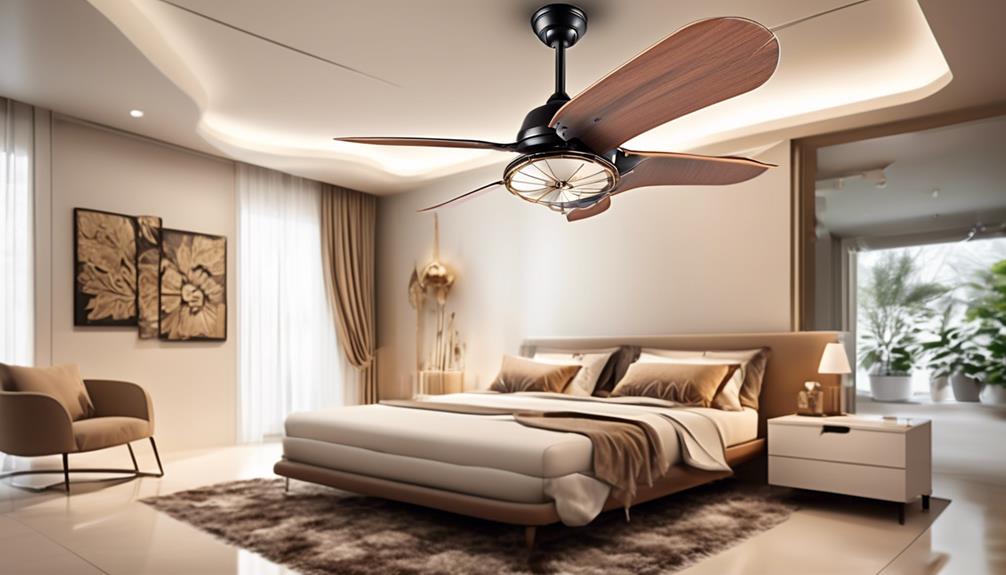
Considering the aesthetic impact of blade quantity on a ceiling fan can greatly influence the overall design and visual appeal of the space. The number of blades on a ceiling fan can play a significant role in its aesthetic appeal. Fans with fewer blades tend to have a more minimalist and sleek look, while those with more blades can create a sense of traditional or rustic charm. The design flexibility offered by different blade quantities allows for customization to match various interior styles and preferences.
Additionally, the aesthetic appeal of a ceiling fan can be further enhanced by considering the shape and material of the blades. For example, wooden blades may contribute to a natural and warm ambiance, whereas metal blades can convey a modern and industrial aesthetic.
Ultimately, the choice of blade quantity should align with the overall design theme of the space and complement its existing decor. By carefully considering the aesthetic implications of blade quantity, one can elevate the visual appeal of a room while still ensuring optimal airflow and functionality.
Energy Efficiency and Blade Count
The number of blades on a ceiling fan directly impacts its energy efficiency. When considering energy efficiency and blade count, two crucial factors to examine are the blade material and the blade angle. The material from which the blades are made can significantly affect energy consumption. For example, wooden blades are lighter and can be more energy-efficient than metal ones. Additionally, the angle of the blades plays a vital role in determining the fan's efficiency. Steeper blade angles can move more air with each rotation, allowing the fan to operate effectively even at lower speeds, thus reducing energy consumption. Let's delve into the specifics of how these factors influence the energy efficiency of ceiling fans:
| Blade Material | Blade Angle |
|---|---|
| Wooden | Steeper |
| Metal | Shallower |
Noise Levels and Blade Quantity

When evaluating noise levels, the quantity of blades on a ceiling fan is a key factor to consider. The number of blades directly affects the airflow and the way air moves in the room, which in turn impacts the noise level produced by the fan. Here are the key factors to consider when evaluating noise levels and blade quantity:
- Motor Efficiency: The efficiency of the motor is crucial in determining the noise levels of a ceiling fan. A more efficient motor can operate at lower speeds without compromising airflow, resulting in reduced noise.
- Blade Design: The design of the blades plays a significant role in sound reduction. Specially engineered blades can minimize air turbulence and noise, providing a quieter operation.
- Balancing: Properly balanced blades can reduce vibrations, which are a common source of noise in ceiling fans.
- Speed Settings: Fans with multiple speed settings allow for customization based on the desired airflow and noise level, providing greater control over the fan's operation.
Considering these factors can help in selecting a ceiling fan with the right blade quantity to achieve optimal noise levels while maintaining efficient airflow.
Practical Considerations for Blade Number
From our experience, the number of blades on a ceiling fan directly impacts its performance and efficiency. When considering the practical aspects of blade number, it's essential to take into account the blade material and the installation process. The material of the blades can significantly affect the fan's performance, as different materials have varying levels of durability, weight, and aerodynamic properties. Additionally, the installation process can be influenced by the number of blades, affecting the balance and stability of the fan.
| Practical Considerations for Blade Number | |
|---|---|
| Blade Material | Steel |
| Wood | |
| Plastic | |
| Installation Process | Balance |
| Stability | |
| Aerodynamics |
Choosing the right blade material and understanding how the installation process is impacted by the number of blades are crucial factors in optimizing the performance and efficiency of a ceiling fan. Mastery in these practical considerations can lead to a well-balanced and effective ceiling fan system.
Frequently Asked Questions
What Are the Different Types of Blade Materials Used in Ceiling Fans and How Do They Impact the Airflow?
Blade materials play a crucial role in the airflow impact, noise levels, and energy efficiency of ceiling fans.
Different materials like wood, metal, and plastic offer varied benefits.
Wood blades are quiet and stylish but might require more maintenance.
Metal blades are durable and efficient, but can be noisier.
Plastic blades are cost-effective and low maintenance, but may not be as durable.
Each material affects airflow and performance differently, so choose wisely based on your needs.
Can the Number of Blades on a Ceiling Fan Affect Its Ability to Cool a Room in Different Climates?
Does the number of blades on a ceiling fan really impact its ability to cool a room in different climates?
We've found that the number of blades can affect airflow distribution, which in turn influences the cooling efficiency of the fan.
In warmer climates, more blades can help to move air more effectively, while in cooler climates, fewer blades may be sufficient.
The blade number does play a significant role in the fan's cooling performance.
Are There Any Regulations or Guidelines Regarding the Maximum Number of Blades That Can Be Used on a Ceiling Fan for Safety Reasons?
There are regulations and safety guidelines in place for ceiling fan design. These guidelines take into account factors like airflow impact, climate cooling, blade materials, and air distribution comfort. They help ensure that ceiling fans are safe and effective for use in various settings.
It's important to adhere to these regulations to maintain optimal functionality and safety standards for ceiling fan usage.
How Do the Angles and Pitch of the Blades Affect the Airflow and Overall Performance of a Ceiling Fan?
When it comes to the angles and pitch of the blades on a ceiling fan, these factors play a crucial role in determining the airflow performance and cooling efficiency.
The blade angles influence how the air is circulated in the room, while the pitch impact affects the overall effectiveness of the fan in providing a comfortable environment.
Mastering these elements can significantly enhance the performance of a ceiling fan, making it a valuable addition to any space.
Can the Number of Blades on a Ceiling Fan Impact the Distribution of Air in a Room and How Does This Affect the Overall Comfort Level?
The number of blades on a ceiling fan can impact the distribution of air in a room, affecting overall comfort level. This is due to the airflow efficiency and design aesthetics. It can also influence noise level and energy consumption.
Different blade numbers can create varying airflow patterns, affecting the perceived comfort in the room. Understanding these factors can help optimize the choice of ceiling fan for a specific space.
Do Ceiling Fans with More Blades Move More Air?
Ceiling fans with more blades do not necessarily move more air. In fact, it’s the angle and pitch of the blades that determines airflow, not the quantity. While bigger fan blades move air efficiently, the number of blades does not necessarily impact the fan’s overall performance.
Conclusion
In conclusion, the number of blades on a ceiling fan can be likened to the notes in a symphony, each playing a crucial role in creating a harmonious airflow.
Whether for aesthetic appeal, energy efficiency, or noise levels, the quantity of blades has a significant impact on the overall performance of the fan.
By carefully considering the practical and aesthetic implications, we can ensure that our ceiling fan becomes a seamless blend of form and function.
- About the Author
- Latest Posts
Introducing Ron, the home decor aficionado at ByRetreat, whose passion for creating beautiful and inviting spaces is at the heart of his work. With his deep knowledge of home decor and his innate sense of style, Ron brings a wealth of expertise and a keen eye for detail to the ByRetreat team.
Ron’s love for home decor goes beyond aesthetics; he understands that our surroundings play a significant role in our overall well-being and productivity. With this in mind, Ron is dedicated to transforming remote workspaces into havens of comfort, functionality, and beauty.
Beginners Guides
Modern Danish Design – 10 Tips To Bring It Home
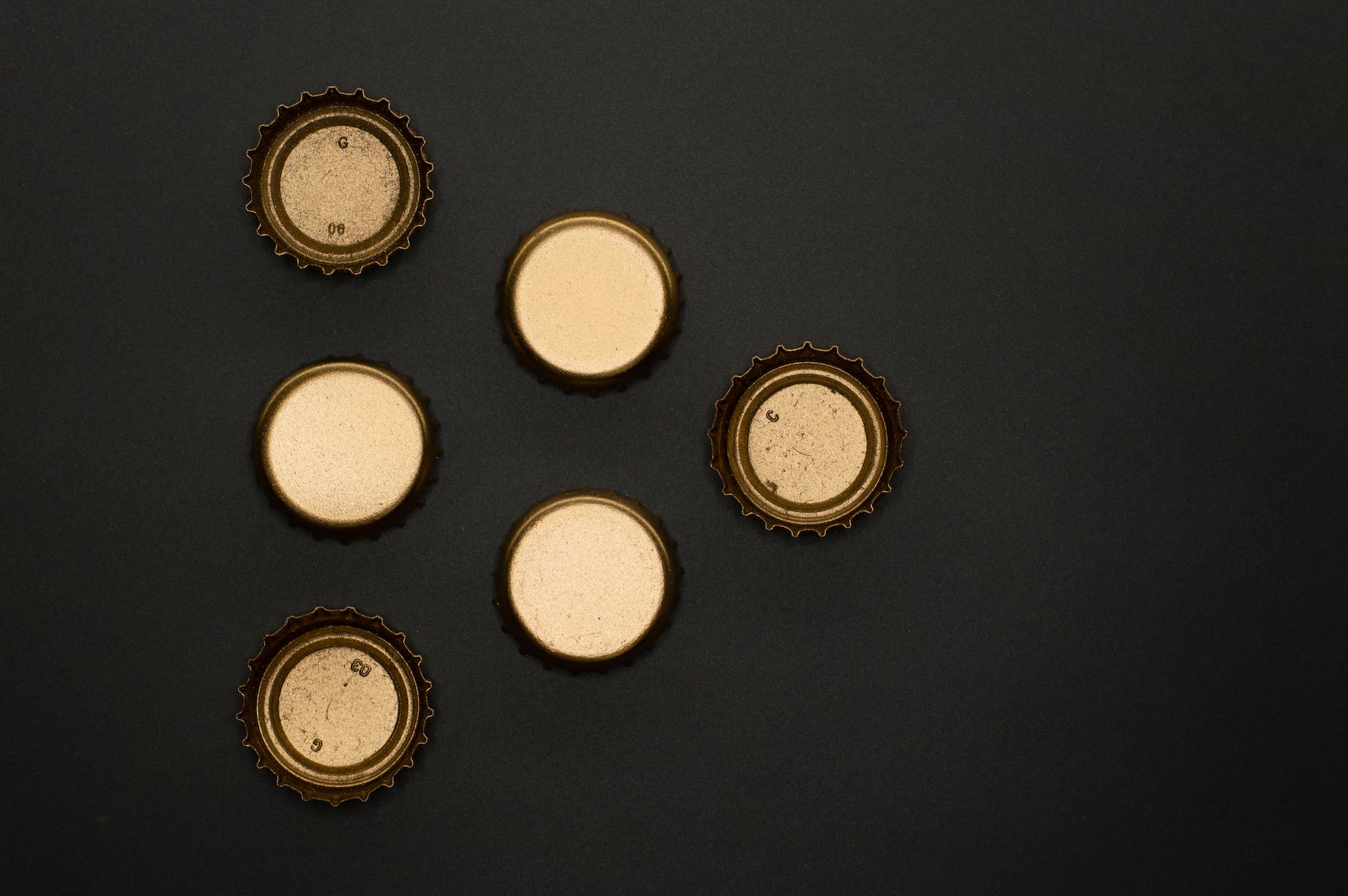
You can bring Modern Danish Design into your home in various ways. The key is to embrace the concept of Hygge, or coziness. This can be accomplished by adding corner sofas and other comfortable furniture pieces. Additionally, lighting, plants, and other small details can also contribute to creating a cozy atmosphere.
Hygge is a Danish design idea

You can add architectural designs to your furniture or decorations to bring hygge to your home. Hygge refers to living in a more relaxed and peaceful environment. You can enhance your home’s natural beauty with natural materials. Plants can be placed in empty corners to add life and beauty to your home. Plants can clean your home. An aquarium or small indoor waterfall can bring nature inside your home.
Hygge is all about soft and plush textures. They provide comfort and sound absorption. You can use them to modify the decor in your home. To create a cozy atmosphere, thick, jewel-colored wool rug can be used during the winter months. Natural jute rugs are also available during warmer months.
Hygge is an idea that has been around since the beginning of time but has gained popularity in America. Hygge has been the subject of many books and articles in the last two years. The Oxford Words of the Year also includes the concept.
Natural lighting
Danish design is known for its popular motif of candlelight. It creates a warm and romantic atmosphere. Since the 20th century, many designers have tried to replicate this effect using electric lights. These five unique Danish lighting fixtures show that modern design can still create an inviting atmosphere.
The PH 5 Pendant is a timeless Danish design. Poul Henningsen designed this pendant. It has an unusual angled shape that diffuses light. These lights come in a variety of styles and finishes. You can choose a PH5 Pendant based upon the style and colour of your room.
The UK is also home of Danish modern design. It has open floor plans and sleek furniture. It’s also well-known for creating a calm atmosphere that helps to relieve the stress of modern life.
Wooden details
Modern Danish design features wood as a common feature. This gives homes a warm, inviting feeling. Danish people love entertaining, so they have large wooden tables, cabinets, fireplaces, and other features. Natural wood tones are prominent and the details are often very simple. Sometimes, wood details can be combined to give a more sophisticated look.
Modern Danish designs often have a slightly different wood grain. These pieces are usually made of teak or European oak wood. To highlight the natural grain, the wood is lightly polished. Modern Danish design features a minimalist aesthetic. To create modern, Scandinavian-inspired pieces, designers often focus on natural materials, including teak, rosewood, and European oak.
Danish modernism also features unusual names and shapes. The Klint Stool, Jacobsen’s egg chair and Jacobsen’s stool are two examples. The chairs were designed by these two men who were inspired by the natural world. Jacobsen also designed a chair that looks like an ant’s legs.
Plants
Modern Danish design emphasizes simplicity. Danish people don’t like clutter on their tables or sideboards. They like clean, simple spaces made from natural and elegant materials. To create contrast between materials and textures, use a soft touch with neutral colours.
Hygge is key to bringing this design into your home. Hygge promotes harmony and well-being by being rooted in the small things of life. Hygge also means to enjoy the moment. Hygge is a popular design concept and home decor. It focuses on natural materials and transparent textures.
The key element is light. Contemporary chandeliers and sphere tables lamps can create tranquil pools of light that increase the sense of hygge within a space.
Unmade beds
Danish designers like to keep things simple. Unmade beds can be a great way to create an intimate feeling. Niki Brantmark is the author and designer for My Scandinavian Home. She recommends that bed sheets not be ironed or wrinkled. Modern Scandinavian design requires stonewashed linen.
Twinkly lights
Twinkly lights are a wonderful addition to your hygge decor. They can be used almost anywhere and emit a more tranquil light than candles. The heart of Danish culture is the fireplace. It is a wonderful place to gather with family and friends. It is a symbol of warmth and fire, so it makes sense to share it with the ones you love.
The Danish design firm Muuto has created the Unfold pendant, which adds twinkling light to any room . It is made of soft silicone and available in a variety of colors. It’s slim and can fit in any space.
Scandinavian design places a strong emphasis on functionality and craftsmanship. Scandinavians are close to nature and their products reflect this. Lumens has a variety of Scandinavian-based brands, so there is something for everyone.
Natural textures
If you’re looking for Scandinavian-inspired decor, consider adding some natural textures to your home. The Ferm Living Anse Vase and Pot are modern designs made from natural sand-colored clay. It is a great touch to have the balanced cylindrical handle and hand-formed handles. These handles are also available in a variety of sizes and neutral colors.
Danish design is known for its simple, minimalist style. Because of its sleek design, the furniture is ideal for small homes and apartments. The Scandinavian interior design is known for its use of neutral tones in the living room and bedrooms. This style is all about functionality. Alvar Aaltos’ stackable stool is an example of this style. It combines simplicity and function. The hygge design concept is a key component of Scandinavian design. It is Danish for “warm colors-for-a cozy-teenage girl-room coziness”. A Nordic room will look cozy and warm with natural textures and warm colours.
Color palette
Modern Danish design colors emphasize natural elements. They can be used in many different ways. You can use browns, greens, and blues to create a relaxing space. Fresh flowers and plants can bring life to your home. This interior design style focuses on simplicity, functionality, natural materials, and elegance.
Modern Danish design’s color palette reflects Scandinavian minimalism, and is connected to the natural world. Danish design is well-known for its uncluttered spaces and slab doors. You can incorporate this look into your home, whether you are a modern homeowner or a Working From Home professional.
The Scandinavian color palette consists of neutral tones mixed with pops of color. It also uses organic materials like wool and wood. Because of their closeness to nature, the Nordic countries use neutral colors to counter the often dark and cold winter months. You can add warmth to this palette by using modern wall art and pops of color.
- About the Author
- Latest Posts
Introducing Ron, the home decor aficionado at ByRetreat, whose passion for creating beautiful and inviting spaces is at the heart of his work. With his deep knowledge of home decor and his innate sense of style, Ron brings a wealth of expertise and a keen eye for detail to the ByRetreat team.
Ron’s love for home decor goes beyond aesthetics; he understands that our surroundings play a significant role in our overall well-being and productivity. With this in mind, Ron is dedicated to transforming remote workspaces into havens of comfort, functionality, and beauty.
Beginners Guides
DIY Small Craft Room Ideas

A compact DIY crafting space is ideal for showcasing your creative talents. There are numerous ways to optimize space while keeping costs low. Effective storage is key in a crafting area. Small crafting spaces can benefit from wall-mounted storage solutions like a pegboard or metal grid. Utilize hangers to neatly store craft supplies, or opt for a mix of baskets and boxes for additional storage options.
Shelving units with open and closed shelves
Both open and closed shelving units can be used to make your craft room appear more spacious and organized. Open shelving allows you to easily see what your room has, but too many open shelves can create a feeling of clutter. Open shelving should not be used excessively.
Floating shelves
Floating shelves can be a great option if you have limited space. These shelves are the ideal way to store all types of stuff. Large open shelving units can be combined with drawers and shelves to provide ample storage. Alternative to shelves, ledges can be used.
Lazy Susan
A Lazy Susan makes storage a breeze. You can use this piece to organize small items, no matter how small your craft area is. You can organize your crafting supplies by spinning it and rotating them on it. Lazy Susans can also be used to decorate shelves. It can store small items or flower vases.
Glass shelf
A glass shelf can be a great way to organize your crafting supplies. This storage solution works well for Cricuts. You can also store scissors and other supplies.
Rolling storage carts
Rolling storage carts can be great for people with limited space. These carts can be placed under your desk or in your closets and allow you to easily access your crafting supplies. You can choose from a range of colors, and they come with storage inserts.
Labels
Labels are a great way to organize your workspace. These labels can be made by either using a cutting machine, or printed out and cut by hand. Affiliate links may be included in this post. These links earn us a small commission on sales made via the links.
Craft tables
A craft table with storage is a great option if your craft space is small and cramped. You will have more space and easier access to your supplies. Because they can be used in smaller spaces, craft tables are an excellent choice.
Pegboards
Pegboards are a great storage option, but can also be personalized. You can customize your pegboard storage by creating an organizer. This DIY project is simple and easy. You can find detailed instructions here to help you make it.
- About the Author
- Latest Posts
Introducing Ron, the home decor aficionado at ByRetreat, whose passion for creating beautiful and inviting spaces is at the heart of his work. With his deep knowledge of home decor and his innate sense of style, Ron brings a wealth of expertise and a keen eye for detail to the ByRetreat team.
Ron’s love for home decor goes beyond aesthetics; he understands that our surroundings play a significant role in our overall well-being and productivity. With this in mind, Ron is dedicated to transforming remote workspaces into havens of comfort, functionality, and beauty.
Beginners Guides
Wood Burning Ideas For Creative Gifts
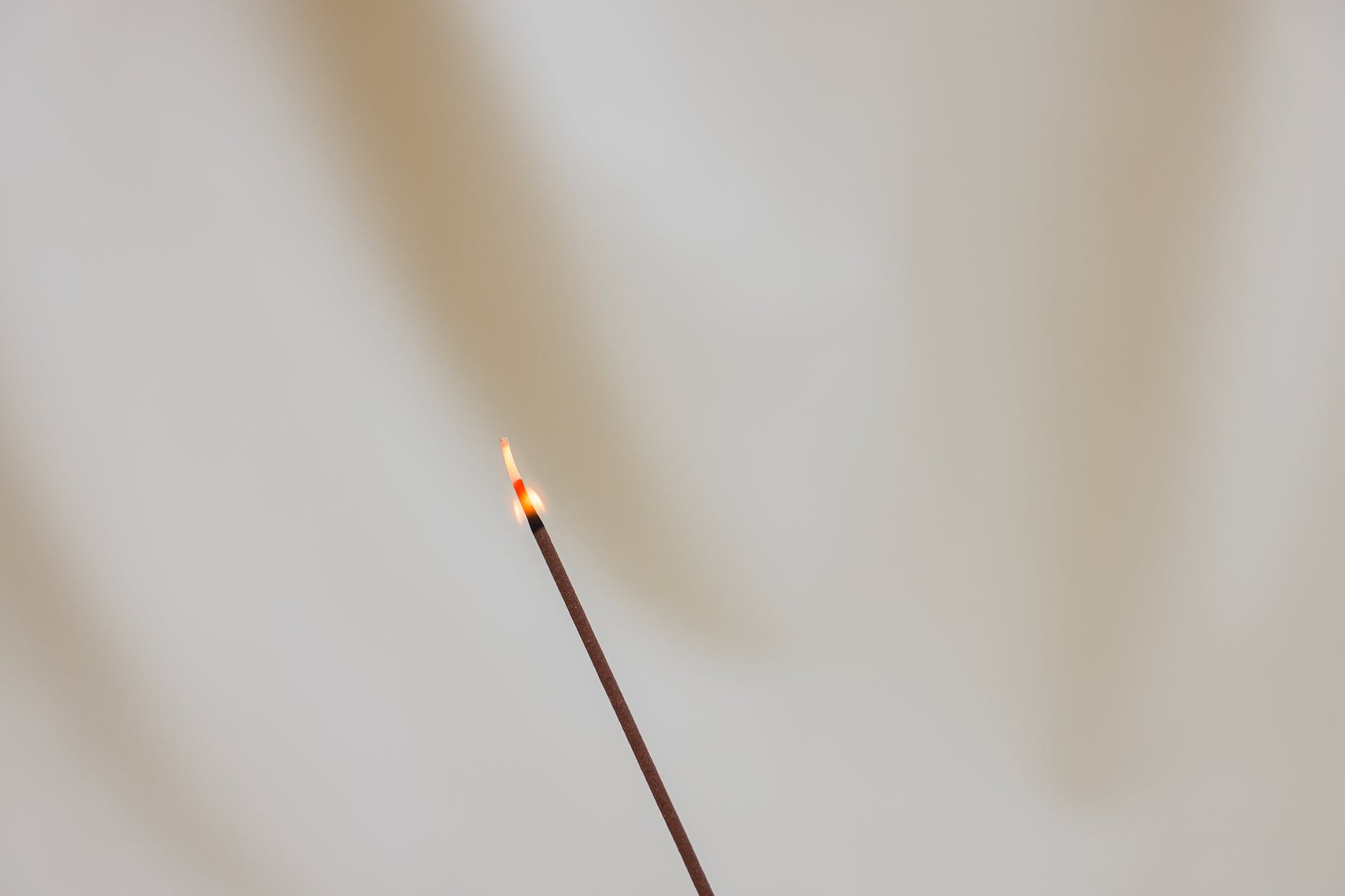
Wood burning is an enjoyable method for crafting unique gifts. It can be utilized to produce a range of items such as coasters and trays. Ornaments are a sought-after gift choice and can be adorned with various pictures or festive designs. Additionally, you can create stylish bangles or earrings through wood burning. These pieces can be enhanced with delicate patterns or embellishments. Enhance your collection with decorative belt buckles using wood burning techniques.

Coasters personalized
Wood burning is an original way to personalize coasters. This ancient craft is quickly becoming one of the most popular DIY crafting styles. This method allows you to burn images onto wood, creating beautiful designs. The possibilities are limitless, whether you want to create a coaster for a friend, or add a personal touch on a gift.
A coaster can be made with just a date and a name, or it can be personalized with symbols and pictures. To play your favorite music, you can also put a Spotify code into the wood. Coasters personalized with your name and message are great for any occasion.
You can personalize your pattern to reflect you and your taste. You can choose between a number of quilt block designs and your own design. You can also burn a simple doodle on your coasters. If you want them to look like a quilt, you can make a series of circles and dots. Another great idea to personalize coasters is country decor.
Personalized spoons
First, you must select a design to use with your wood-burning spoons. Either draw the design on paper, or take a photograph. Use a pencil to trace the design onto the wood. To draw the design, use a Crayola pencil or a writing pencil. After you’ve created your outline add black ink.
Cut a piece of transfer tape slightly larger than your design . Next, apply the tape to the design and rub it to make sure it sticks. After the tape has adhered, flip the design upside down and place it on top of the spoon’s head. This vinyl will not be able to lay flat on a curved surface. It will likely have some wrinkles. These can be removed later.
There are many options to ensure safe wood-burning spoon foods. There are many sealers available, including Tung Oil. It can be applied directly to the wood burnt area or to the whole wooden spoon. Some designs are floral or botanical in nature.
Tin cans personalized
Tin cans can be customized in many ways. You can paint them, or use decorative tape to add color and pattern. They can be labeled with a unique brand name. To add some flair, you can decorate the cans with sequins or beads.
Tin cans can be personalized for many purposes. They can be used to make pencil holders or flower vases. You can make a simple tin can a keepsake for special occasions such as weddings and birthdays. It can be personalized with a message or illustration.
Another great wood-burning idea? Personalizing jewelry. It is possible to create earrings that are unique for any occasion, including Valentine’s Day and Halloween. These earrings can be made in many ways, and you could even learn calligraphy. You can also use the same technique to personalize a wooden container. Melissa Esplin has a great tutorial on how to use this technique.
Personalized trays
A wooden tray is a beautiful and unique gift idea. You can stain wood any color you like and have a message inscribed on it. Wooden trays can be personalized with a message or personalization to make unique gifts.
These personalized trays make wonderful gifts for weddings, new parents and roommates. These trays can be made from solid wood or a medium walnut stain. You can personalize the tray with the name of the couple, or the year that the family was established. This is a unique gift idea that will make a great gift for weddings, new parents, and roommates who feel they are part of the same family.
Wood-burnt serving trays are a unique way to present food. You can use one to serve sandwiches. You can customize them to fit the needs of each recipient.
- About the Author
- Latest Posts
Introducing Ron, the home decor aficionado at ByRetreat, whose passion for creating beautiful and inviting spaces is at the heart of his work. With his deep knowledge of home decor and his innate sense of style, Ron brings a wealth of expertise and a keen eye for detail to the ByRetreat team.
Ron’s love for home decor goes beyond aesthetics; he understands that our surroundings play a significant role in our overall well-being and productivity. With this in mind, Ron is dedicated to transforming remote workspaces into havens of comfort, functionality, and beauty.
-

 Vetted4 days ago
Vetted4 days ago15 Best Boxwood Varieties for Thriving in Full Sunlight
-

 Vetted1 week ago
Vetted1 week ago15 Best Ways to Label Clothes for Nursing Home Residents – Stay Organized and Efficient
-

 Vetted5 days ago
Vetted5 days ago15 Best Dryer Vent Hoses to Keep Your Laundry Room Safe and Efficient
-

 Vetted5 days ago
Vetted5 days ago15 Best Spider Sprays to Keep Your Home Arachnid-Free
-

 Vetted4 days ago
Vetted4 days ago14 Best Cleaners for Aluminum Surfaces – Shine Bright Like a Diamond
-

 Vetted5 days ago
Vetted5 days ago15 Best Nightstand Charging Stations to Keep Your Devices Organized and Ready to Go
-
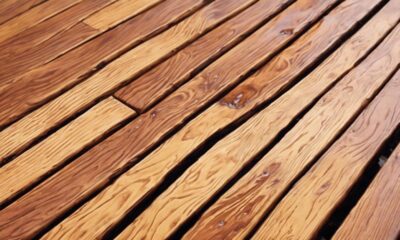
 Vetted8 hours ago
Vetted8 hours ago15 Best Ways to Waterproof Wood for Ultimate Protection and Longevity
-

 Beginners Guides3 days ago
Beginners Guides3 days agoHow to Slow Down My Ceiling Fan to Reduce Wind Chill





